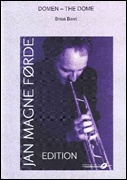We've found 390 matches for your search. Order by
Results
-
 £50.90
£50.90CAVATINE (Cornet or Flugel Horn Solo with Brass Band) - Bizet, Georges - Fernie, Alan
From the Pearl Fishers. Grade: Easy/Medium.
Estimated dispatch 7-14 working days
-
 £54.20
£54.20DEVIL RIDES, The (Eb Horn Solo with Brass Band) - Barry, Darrol
Grade: Medium.
Estimated dispatch 7-14 working days
-
 £64.50
£64.50DOME OF TRONDHEIM, The (Domen) (Flugel Horn Solo with Brass Band) - Forde, Jan Magne
Dedicated to the Nidaros Cathedral, Norway. A work to feature your Flugelhorn soloist with plenty of space and resonance. Suitable for 3rd Section Bands and above.
Estimated dispatch 7-14 working days
-
 £54.20
£54.20FLOWER SONG, The (Eb Horn Solo with Brass Band) - Bizet, Georges - Smith, Sandy
From Act II of Carmen. Grade: Medium.
Estimated dispatch 7-14 working days
-
 £50.90
£50.90GEORGIA ON MY MIND (Trombone or Eb Horn Solo with Brass Band) - Carmichael, Hoagy - Richards, Goff
Grade: Medium.
Estimated dispatch 7-14 working days
-
 £32.95
£32.95HERE, THERE AND EVERYWHERE (Flugel Horn Solo with Brass Band) - Jagger, Tony
Estimated dispatch 7-14 working days
-
 £37.95
£37.95HILLTOP HOLIDAY (Flugel Horn Solo with Brass Band) - Newsome, Roy
Estimated dispatch 7-14 working days
-
 £50.90
£50.90HINE E HINE (Flugel Horn Solo with Brass Band) - Barry, Darrol
Grade: Medium.
Estimated dispatch 7-14 working days
-
 £50.90
£50.90I DON'T KNOW HOW TO LOVE HIM (Eb Horn Solo with Brass Band) - Lloyd Webber, Andrew - Woodfield, Ray
From Jesus Christ Superstar. Grade: Easy.
Estimated dispatch 7-14 working days
-
 £50.90
£50.90I'LL BE STILL IN LOVE WITH YOU (Eb Horn Solo with Brass Band) - Hazzard, Tony - Fernie, Alan
Grade: Easy/Medium.
Estimated dispatch 7-14 working days
